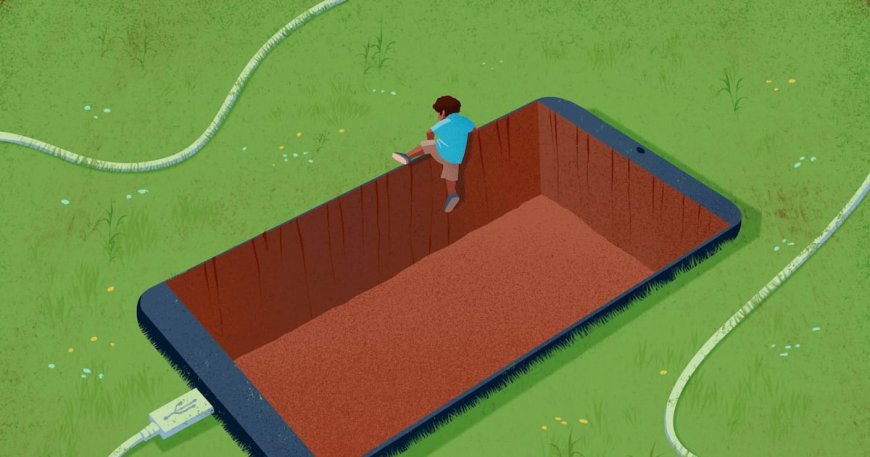AI is generating child pornography. What should the penalties be for those who create, distribute and possess it?
Is AI-generated porn treated differently by the law? | Opinion Deseret News

Child Sexual Abuse and the Online Market for Child Pornography

Child sexual abuse is a major problem worldwide. But the direct abuse of children is not as lucrative as the digital dissemination of such material, and the online market for child sexual abuse material, more commonly known as child pornography, is immense and growing.
The Profound Effects on Abused Children
The effects on the children abused are profound — physically, mentally, and emotionally. In addition, the images are often impossible to completely erase from the internet, ensuring continued trauma. And the market is truly transnational; a 2022 sting by New Zealand found a network of child-pornography sharers across 12 countries. It’s a form of virtual child sex trafficking.
The Evolution of Creation and Distribution
Meanwhile, the creation and distribution of this material have evolved with new developments in technology. The advent of AI has enabled deepfake child pornography, and new AI image generators have made it possible to create original images from text descriptions. The generative AI model Stable Diffusion had actually been trained on corpora that included child pornography.
Nation-State Responses and the Sustainable Development Goals
Each nation-state must decide whether the distribution and possession of this material are to be viewed as criminal acts, and if so, to what extent AI-generated images are also to be treated as child pornography.
Hearteningly, the U.S. and the U.K. have responded strongly, along with other nations. In the U.S., federal law prohibits the production, distribution, reception, and possession of such images using any means or facility of interstate or foreign commerce — including, of course, the internet.
To its credit, the U.S. Department of Justice recently determined that AI-generated images are to be treated the same as those not generated by AI, arguing that AI could not generate such images unless actual images of children had been used in training the generator. As Deputy Attorney General Lisa Monaco has asserted, “Put simply, CSAM generated by AI is still CSAM, and we will hold accountable those who exploit AI to create obscene, abusive and increasingly photorealistic images of children.”
Recent Legislative Moves in Germany
And that is why recent legislative moves in Germany are so baffling to observers. Recently, the Bundestag agreed to significantly lower the penalties for possession of child pornography. Possession will garner a minimum of only three months’ imprisonment, while distribution will result in a minimum of six months’ imprisonment. These crimes will now be misdemeanors instead of felonies. It’s very hard not to see this as a decriminalization of possession and distribution of child pornography by Germany.
The Importance of Protecting Children
A society that softens its stance on protecting children from sexual predators is on the wrong track. The immense and lasting harm done to children by such predators is clearly evident. The U.S. Department of Justice should be applauded for applying penalties that fit the severity of the crime. Let’s hope the EU will force Germany to rethink its position on the matter before AI gets even more sophisticated.
Valerie M. Hudson is a university distinguished professor at the Bush School of Government and Public Service at Texas A&M University and a Deseret News contributor. Her views are her own.
SDGs, Targets, and Indicators Analysis
1. Which SDGs are addressed or connected to the issues highlighted in the article?
- SDG 5: Gender Equality – The article discusses child sexual abuse, which is a violation of children’s rights and contributes to gender inequality.
- SDG 16: Peace, Justice, and Strong Institutions – The article highlights the need for legal measures and international cooperation to combat child sexual abuse and child pornography.
2. What specific targets under those SDGs can be identified based on the article’s content?
- SDG 5.2: Eliminate all forms of violence against all women and girls in the public and private spheres, including trafficking and sexual and other types of exploitation.
- SDG 16.2: End abuse, exploitation, trafficking, and all forms of violence against and torture of children.
3. Are there any indicators mentioned or implied in the article that can be used to measure progress towards the identified targets?
- Indicator for SDG 5.2: Number of reported cases of child sexual abuse and child pornography.
- Indicator for SDG 16.2: Number of arrests, prosecutions, and convictions related to child sexual abuse and child pornography.
SDGs, Targets, and Indicators Table
| SDGs | Targets | Indicators |
|---|---|---|
| SDG 5: Gender Equality | Target 5.2: Eliminate all forms of violence against all women and girls in the public and private spheres, including trafficking and sexual and other types of exploitation. | Indicator: Number of reported cases of child sexual abuse and child pornography. |
| SDG 16: Peace, Justice, and Strong Institutions | Target 16.2: End abuse, exploitation, trafficking, and all forms of violence against and torture of children. | Indicator: Number of arrests, prosecutions, and convictions related to child sexual abuse and child pornography. |
Copyright: Dive into this article, curated with care by SDG Investors Inc. Our advanced AI technology searches through vast amounts of data to spotlight how we are all moving forward with the Sustainable Development Goals. While we own the rights to this content, we invite you to share it to help spread knowledge and spark action on the SDGs.
Fuente: deseret.com

Join us, as fellow seekers of change, on a transformative journey at https://sdgtalks.ai/welcome, where you can become a member and actively contribute to shaping a brighter future.







